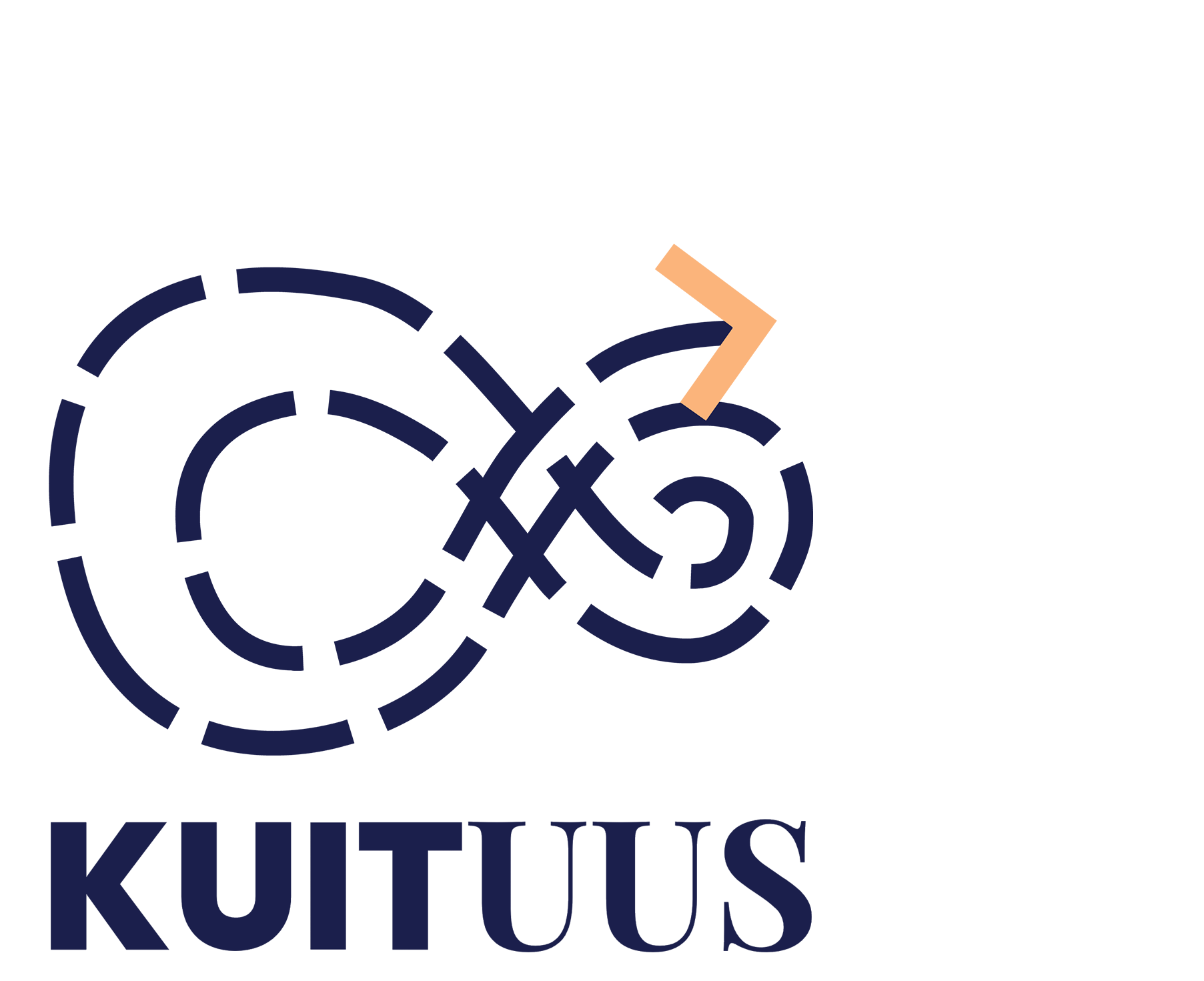2: WHAT?
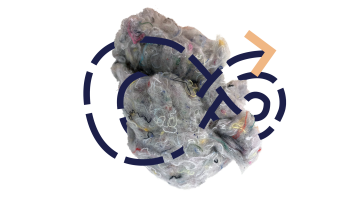
2: WHAT?
What is recycled textile fibre and what can it be used for?
In the previous chapter, we covered some of the main reasons for making use of recycled textile fibre.
In this second chapter of the Kuituus online book, we explain what recycled textile fibre is and what it can be used for.
Content
2.1. What is recycled textile fibre?
2.2. Potential uses for recycled textile fibre
- Clothes and other textile products
- Nonwovens, insulations, fillings, etc.
- Waste hierarchy
- Sorting and identification of textiles
- Recycling methods
- How the mechanical recycling plant operates
2.1
What is recycled textile fibre?
Recycled textile fibre is a fibre separated from used textiles, such as clothes or sheets. In a way, the textile is returned back into a fibre that it was originally made of. Fibres can be separated through mechanical, chemical or thermal recycling.
The qualities of recycled textile fibre vary depending on the raw materials. Therefore end-of-life textiles need to be sorted before refinement into fibres. End-of-life textiles refer to textiles that are redundant for their owner – including both reusable textiles and textile waste that can no longer be used as it is. In the sorting process, it is important to identify the fibre composition of textiles in order for the recycled textile fibre to be suitable for the wanted end use.
Recycled textile fibre is suitable for various uses and it is possible to impact the qualities of the fibres during the recycling process. In the next sections of this chapter, we will explain more about the end uses for recycled textile fibre as well as the recycling process itself.
Pictures are of recycled fibres made of post-consumer textiles. Colour and other qualities are determined by the end-of-life textiles that are used as raw material, and therefore, one-coloured end products are also possible.
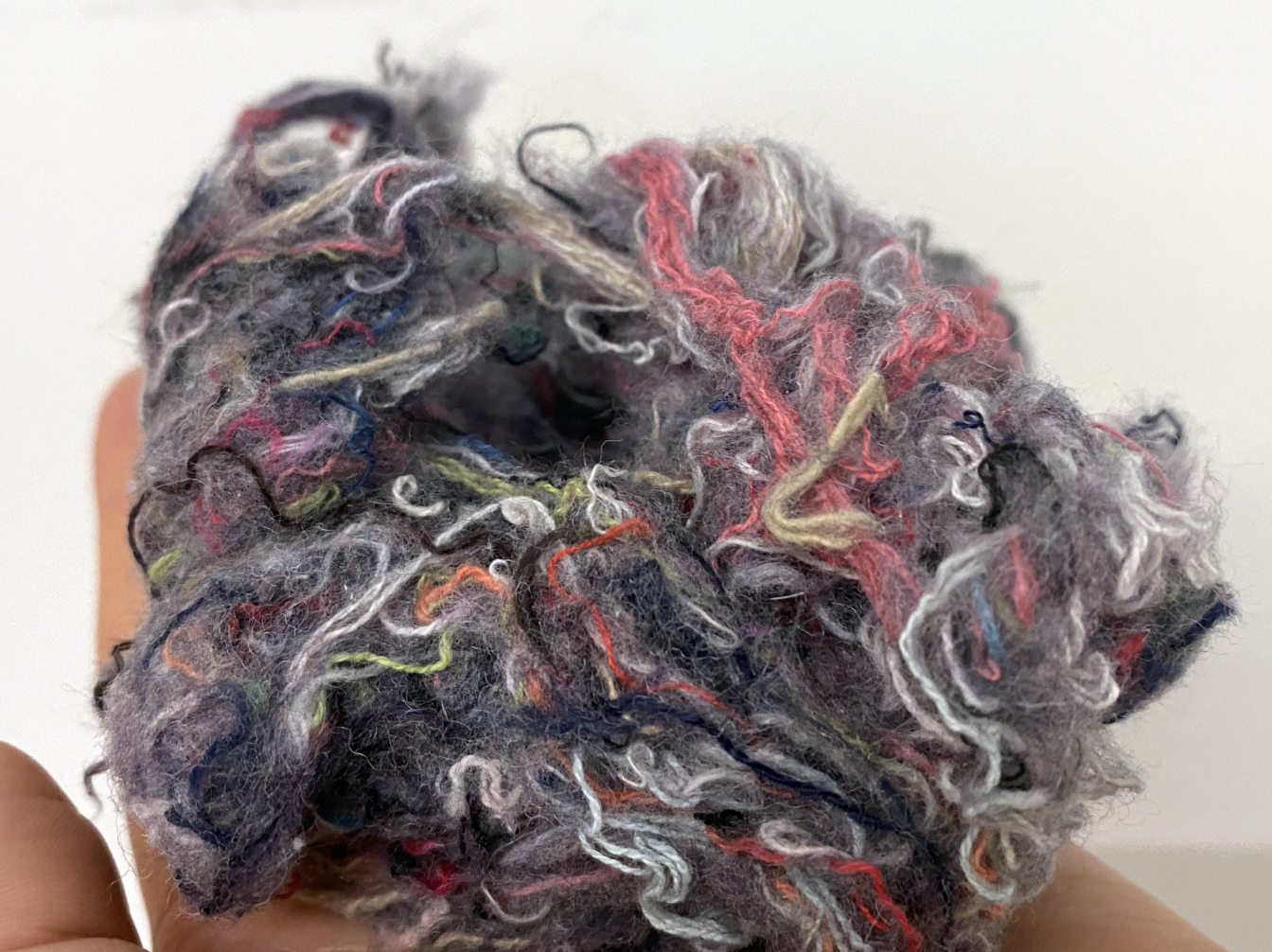
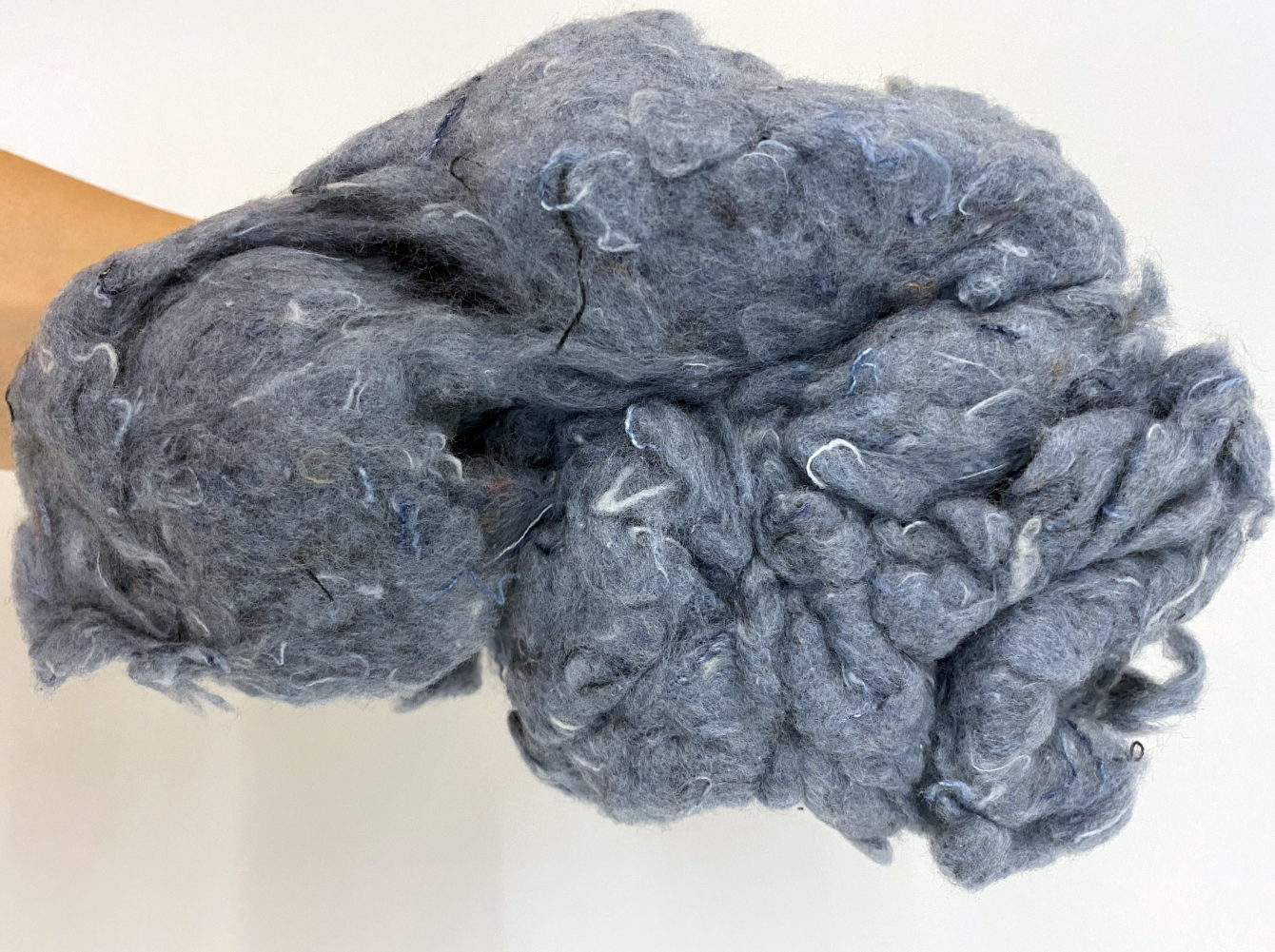
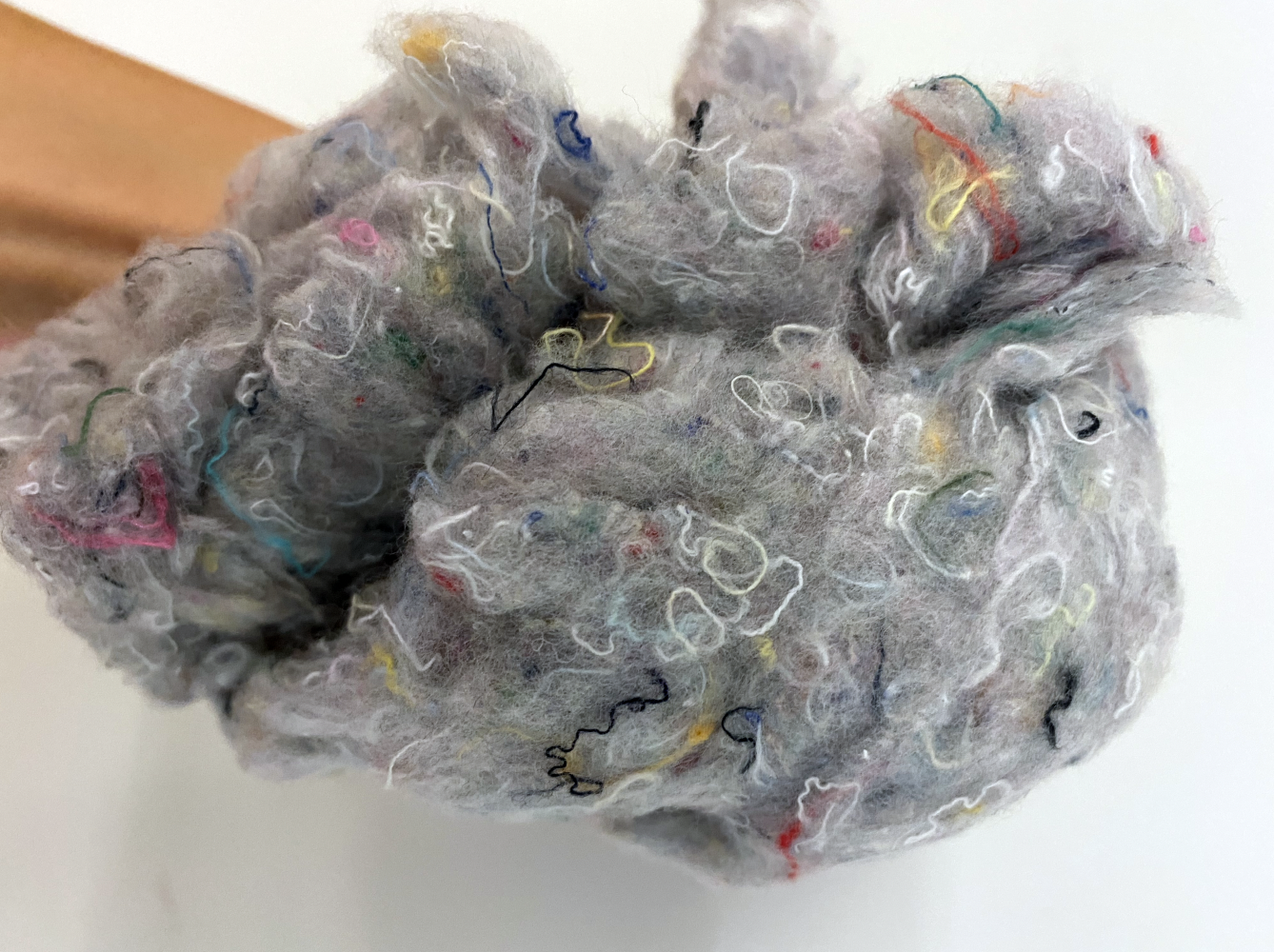
Uniform recycled fiber is produced from companies’ disposal textiles, such as sheets.
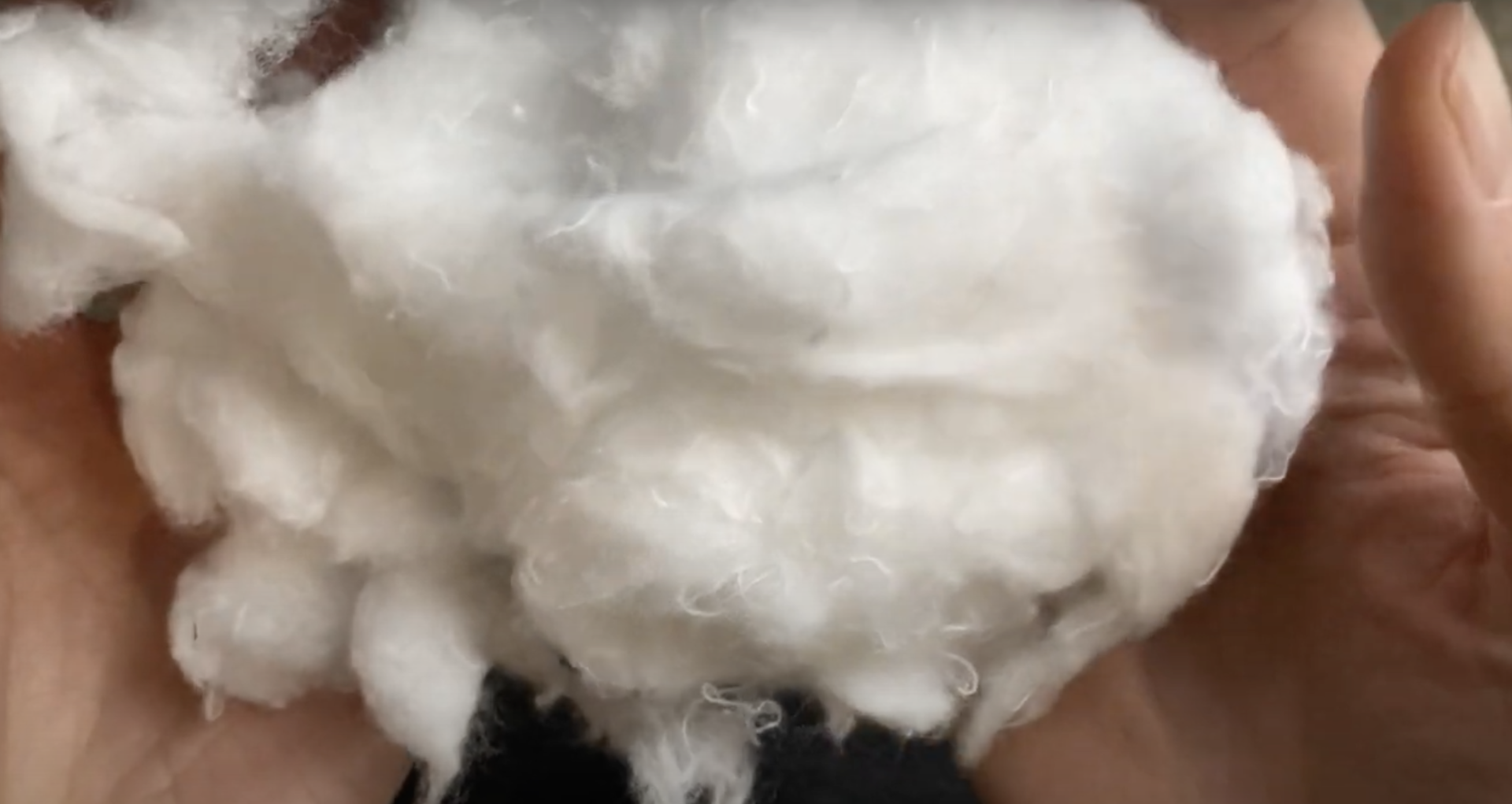
Lähteet:
Kuituus-podcast, jakso 3
Kuituus-podcast, jakso 4
Rester Oy. Our process.
Telaketju (2.3.2018) Mitä on poistotekstiili?
2.2
Potential uses for recycled textile fibre
Recycled textile fibre can be utilised as a raw material in various products. In general, recycled textile fibre can be used wherever virgin textile fibre is used. Recycled textile fibre can be used both in upcycling and downcycling. This means that recycled fibre can be used to manufacture items that are of same value or more valuable than the input material (end-of-life textiles) as well as items of lower value – such as nonwovens, insulation and composites. From the point of view of circularity and economic gain, the primary use should be to manufacture items with highest possible value added. This would mean, for example, yarn and fabric.
Below you will find a list of example uses for recycled textile fibre. Check out also the inspiring company and product examples here!
Examples:
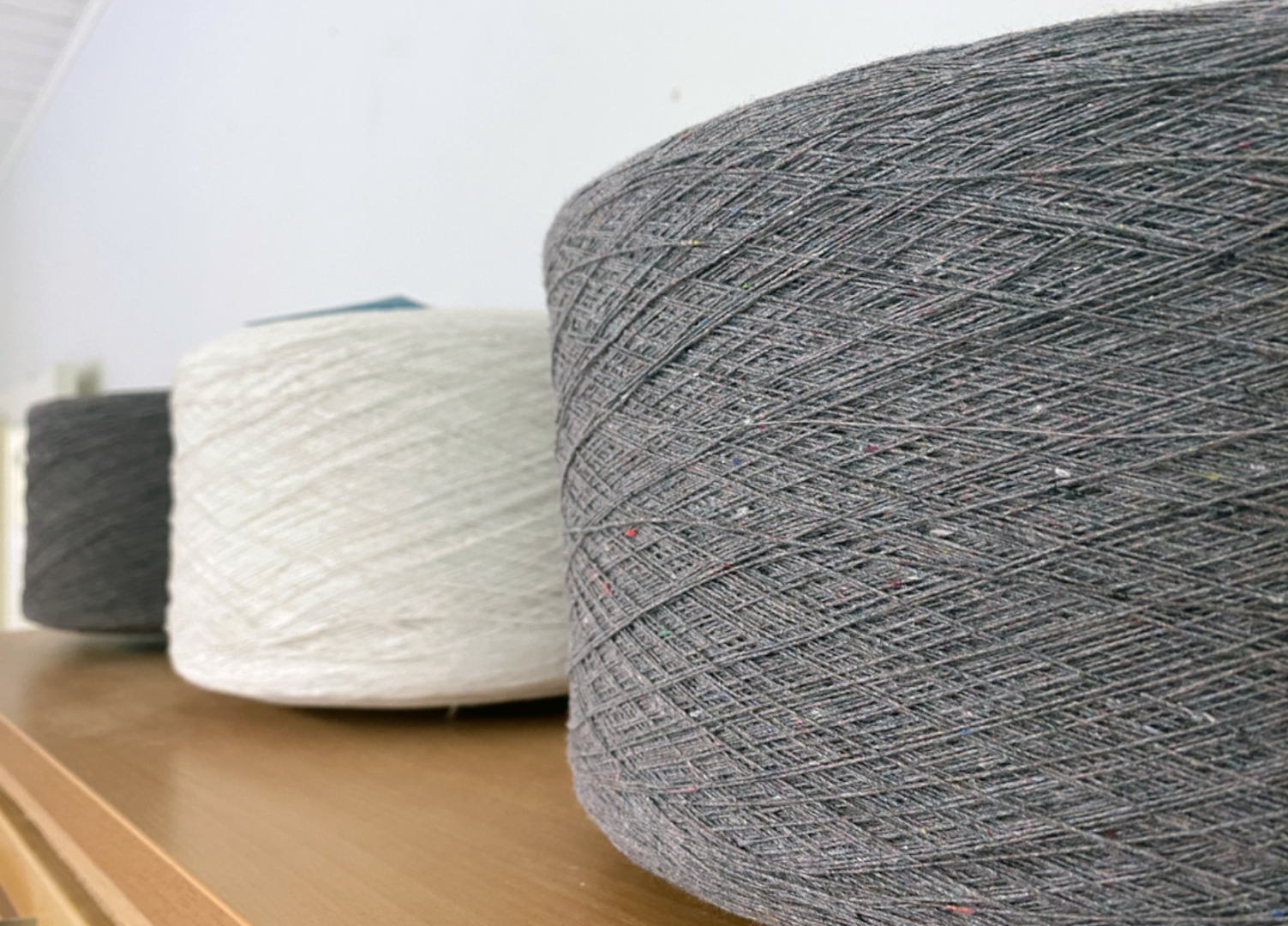
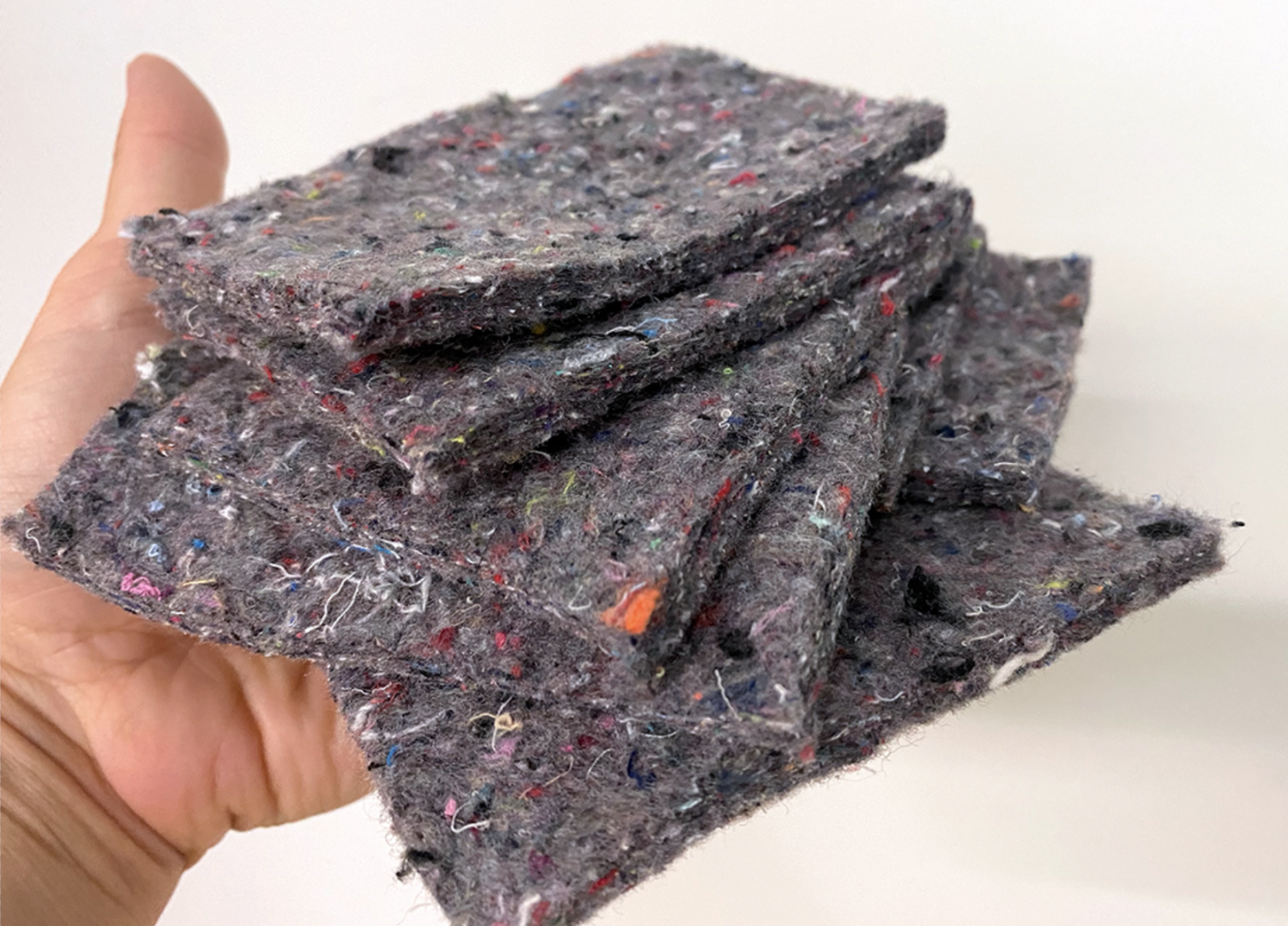
Clothes and other textile products
By mixing recycled fibre, for instance, with virgin cotton or chemically recycled material, mechanically recycled textile fibre may be used for yarn and fabric. For example, Pure Waste Textiles manufactures clothes from mechanically recycled cotton fibre by mixing the cotton fibre with recycled polyester from PET-bottles.
Nonwovens, insulations, fillings, etc.
For example:
- Textiles used in transportation and vehicles (sound insulation, background material for upholstery)
- Industrial textiles (e.g. filters)
- Health care and hygienic textiles (this is the largest group of nonwovens but not optimal for recycled material)
- Household textiles (pillows, blankets, background material for furnitures’ upholstery, furniture fillings, background material for carpets)
- Components for textile industry (buckram)
- Agricultural textiles (geotextiles, frost protection, sun protection)
- Construction textiles (geotextiles used in excavation, fibre or textile reinforced cement, sound insulation materials, insulation)
- Packaging textiles (nonwoven wraps and other packages)
- Sports textiles (textile fibre reinforced composites)
- Geotextiles (nonwovens used in excavation, erosion prevention, note! 80 % geotextiles are nonwovens)
- Safety equipment textiles (textile fibre reinforced composites)
- Environmental protection textiles (filters, erosion prevention)
References
Researcher Marja Rissanen, Aalto University
Kuituus podcast, episode 3
Kuituus podcast, episode 5
Merriam-Webster. Upcycle.
Merriam-Webster. Downcycle.
2.3
The recycling process
This section dives into the recycling process of textiles, focusing specifically on mechanical recycling. What is the journey from an end-of-life textile into a new fibre like? Below the process has been simplified in a picture.

Waste hierarchy
Before going deeper into the recycling process, we have wanted to demonstrate the so-called waste hierarchy. The waste hierarchy depicts the priority levels in waste management. It is worth noting that recycling is only on the level 4 of the hierarchy. Recycling textiles is the last resort to ensure maintaining the material in the cycle before sending it to incineration and energy recovery.
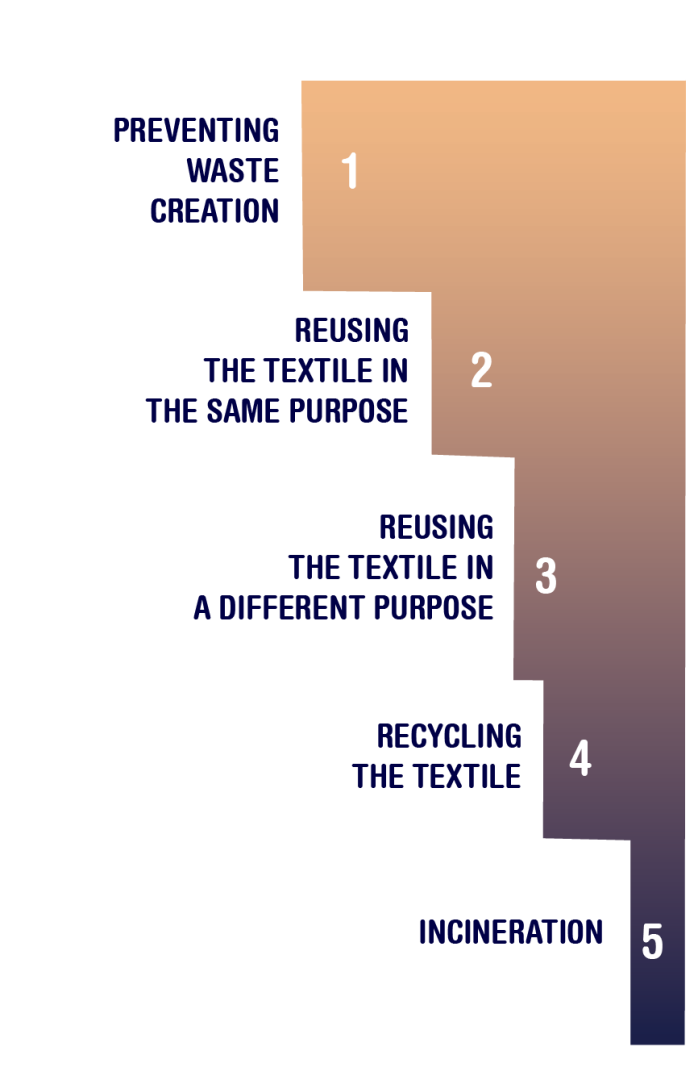
1: Preventing waste creation; Preventing overproduction (e.g. by preventing the creation of unsold products or products sold with a discount). Waste creation is minimised throughout the production, for example, by avoiding cutting waste.
2: Reusing the textile in the same purpose; Textile products or clothes are reused in the same purpose either as it is or as slightly modified. Re-designs and repairs are also possible.
3: Reusing the textile in a different purpose; This is on the fringe between reuse and recycling and could mean, for instance, turning sheets into a clothing fabric or a rag rug or manufacturing bags from old clothes.
4: Recycling the textile; Recycling the textile back into fibres through mechanical, chemical or thermal recycling.
5: Incineration; The last option is energy recovery, i.e. incineration. In Finland, waste is no longer allowed at landfills but globally an immense amount of textile waste ends up in landfills. Energy recovery by incineration is an easy option as recycling technologies are still in their infancy. Therefore, supporting and researching recycling technologies is vital for textiles’ circularity.
References
Researcher Marja Rissanen, Aalto University
Textile sorting and identification
Identifying and sorting textiles according to their material before recycling is important in order to produce reusable textile fibre. In addition to sorting by material, recyclable textiles can be sorted by colour. This way it is possible to produce recycled fibre of certain colour and dyeing is not needed.
The sorting and identification process is impacted by the original textile qualities of the recycled material. Post-consumer textiles include a wide range of materials and qualities. Textiles – such as sheets, towels and workwear – from companies, on the other hand, are usually more homogeneous and their fibre composition is well known. For example, Lindström and Sokos hotels have published that they will be supplying end-of-life textiles for Rester’s recycling plant.
Textiles are currently identified mainly manually. As the volume and end uses of recycled textiles increase, identification needs to happen faster and more accurately. Technologies for this purpose are under development and possibly commercialised in the next few years. Most of them make use of near-infrared radiation and compare the information from a piece of textile to a compiled material library.
References
Kuituus podcast, episode 4
Lindström. Lindström ja Rester käynnistävät yhteistyön Pohjoismaiden ensimmäisen teollisen mittakaavan poistotekstiilien jalostustoiminnassa.
Sokos Hotels (18.3.2021). Sokos hotellien työasut jalostuvat pian uusiokuiduksi.
Researcher Kirsti Cura from LAB University of Applied Sciences explains what identifying and tracking textiles means and what kind of technologies are utilised for it.
Recycling methods
Textiles can be recycled mechanically, chemically or through thermal recycling. In mechanical recycling (the method used by both Rester’s and Lounais-Suomen Jätehuolto’s refinement plant) the textile is mechanically shredded into fibre form. The easiest and least energy-intensive way for utilising mechanically recycled fibre is in the production of nonwovens. Mechanically recycled fibre can also be made into yarn but it requires combining the fibres with either virgin or chemically/thermally recycled fibres. In the Kuituus online book, we focus mainly on mechanical recycling.
Recycling may also be done chemically or thermally by dissolving or melting the polymer or monomer and making new fibres from it. Recycled polyester, for example, from PET-bottles, is made using this method by melting and remanufacturing the fibres. Moreover, the Ioncell technology developed at Aalto University utilises chemical recycling. This type of recycling requires more energy than mechanical recycling but usually the value of a product is increased or its qualities are improved compared to the original product.
References
Researcher Marja Rissanen, Aalto University
How the mechanical recycling plant operates
The end-of-life textile refinement plants of Rester and Lounais-Suomen Jätehuolto both utilise mechanical recycling. After sorting the end-of-life textiles, they are fed into the refinement conveyor belt. First, textiles are cut into smaller pieces and hard parts such as zippers and buttons are removed. After that the pieces are passed into the blending chamber, in which it is possible to add virgin material or necessary chemicals into the mixture to ensure a desired outcome. Then the pieces go through the shredding machine and are opened into fibres. The end result is similar to the texture of cotton wool. The refinement plants of Rester and LSJH are fairly similar, and you can learn more about Rester’s plant from their web site.
Material samples from the different phases of the recycling process
- Sorted, clean end-of-life textile
- Material that has gone through the guillotine cutters
- Material that has been shred once
- Final recycled fibre
- “Dust” that is generated as a side stream of the recycling process. It can also be used as a raw material for certain uses.

